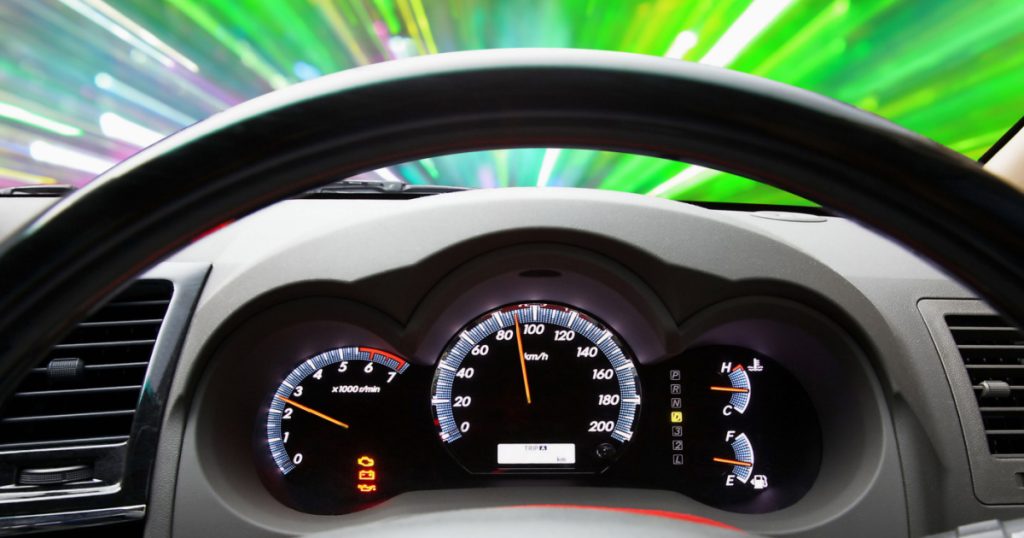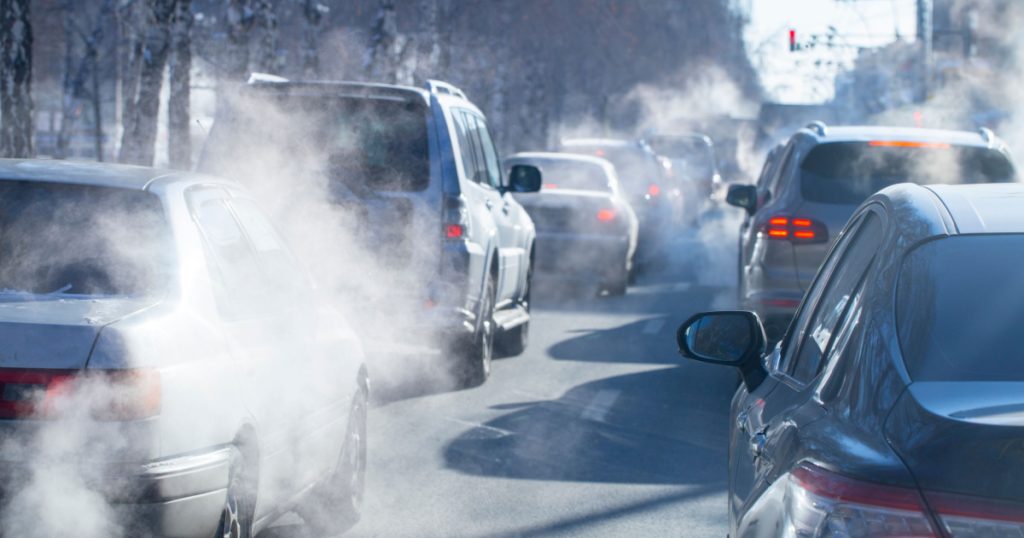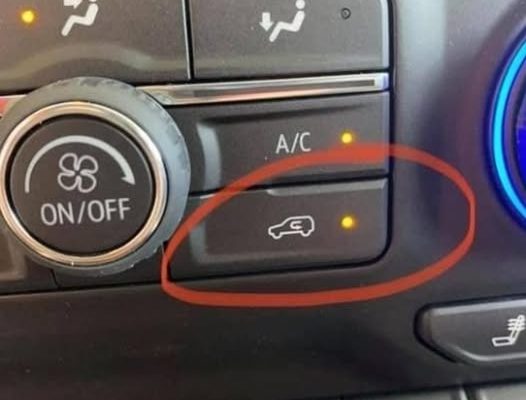In the intricate dashboard landscape of modern vehicles, amidst an array of buttons and symbols, there exists a seemingly unassuming yet vital control – the air recirculation button. While it may not seize the spotlight like the air conditioning controls, the air recirculation button plays an indispensable role in upholding cabin comfort and air quality. In this article, we delve into the mechanics and virtues of this unassuming button, shedding light on its significance, especially in scenarios relevant to the insurance niche.
Explore the Inner Workings of Your Vehicle’s Air Recirculation Button
Most drivers interact with it without fully understanding its purpose – the air recirculation button, a modest yet influential component of your car’s climate control system. As you navigate the intricate dashboard of modern vehicles, filled with an array of buttons and symbols, this button quietly awaits activation.
The Air Recirculation Button: A Breath of Fresh Air
Within the domain of automotive controls, the air recirculation button emerges as a stalwart guardian of in-cabin air quality. Often symbolized by an icon featuring a car with a curved arrow, its mission is clear: to keep the air within the vehicle circulating, eschewing the inflow of external air. As per insights from Eden Tyres & Servicing¹, activating the air recirculation button serves as a practical means to recirculate the air already ensconced within the cabin. This, in turn, directs the air conditioning system to cool the pre-chilled interior air, rather than expending energy on continuously cooling incoming hot air.
The underpinning principle extends beyond mere temperature comfort; it’s all about enhancing efficiency. When the air conditioning is engaged and the recirculation mode is in operation, the system excels in rapid cooling with diminished exertion, ultimately translating into heightened fuel efficiency. Moreover, this mode functions as a protective shield against outdoor pollutants, exhaust emissions, and allergens, thus fostering a cleaner and healthier environment for the vehicle’s occupants. In the insurance niche, recognizing the significance of these nuances can be pivotal in ensuring comprehensive coverage for both the vehicle and its passengers.
Benefits Beyond Comfort
The air recirculation button transcends its role as a mere comfort enhancer; it stands as a smart tool that significantly enhances both the efficiency and overall driving experience.
Improved Fuel Efficiency

As highlighted by The Wall Street Journal², the utilization of the air recirculation mode directly correlates with enhanced fuel efficiency. By recirculating the already cooled interior air, this mode demands less energy compared to the continuous cooling of warmer external air. This not only translates into fuel savings but also alleviates the strain on the air conditioning system, potentially extending its longevity. In the insurance niche, understanding these intricacies can prove beneficial in terms of vehicle maintenance and fuel conservation.
Cleaner Air, Healthier Environment

Air quality assumes paramount significance, particularly in urban settings teeming with pollution. The air recirculation button emerges as a formidable shield against the incursion of pollutants and allergens. The utilization of recirculated air equips drivers with a potent means to markedly curtail their exposure to external contaminants. In this manner, it contributes to the creation of a safer and more comfortable cabin environment, aligning seamlessly with the insurance niche’s focus on safety and well-being.
Quieter Ride, Reduced Stress

The advantages of the air recirculation button extend beyond the realm of air quality. By recirculating the interior air, it paves the way for a quieter ride, effectively mitigating the noise emanating from bustling streets. Furthermore, by alleviating the strain on the air conditioning system, the vehicle’s various components endure less stress. This, in turn, may translate into reduced maintenance demands and the prospect of extended performance longevity. These considerations resonate with the insurance niche’s emphasis on vehicle longevity and overall efficiency.
When and When Not to Engage the Recirculation Button
The air recirculation button truly shines in distinct scenarios, elevating the driving experience and prioritizing the well-being of passengers.
Hot Weather:

Amid scorching weather conditions, particularly during a heatwave, activating the air recirculation mode takes center stage. In such situations, this mode empowers the air conditioning system to expedite the cooling process within the cabin, offering a swift reprieve from the sweltering heat. This not only enhances comfort but also aligns with the insurance niche’s focus on passenger well-being during adverse weather conditions.
Polluted Areas:

In locales characterized by elevated pollution levels, such as congested traffic or industrial districts, the activation of the recirculation mode operates as a safeguard for the cabin. It acts as a formidable shield, offering protection against detrimental exhaust fumes and pollutants, thereby securing the well-being of the vehicle’s occupants. This is especially pertinent in the context of the insurance niche, where passenger health and safety are paramount concerns.
Odor Control:

Confronted with an overpowering odor emanating from a nearby landfill or factory? The air recirculation mode serves as your ally, effectively repelling these disagreeable scents, ensuring your journey continues in uninterrupted comfort. This aspect aligns seamlessly with the insurance niche’s commitment to passenger comfort and satisfaction.
Occasions to Avoid Usage
While the air recirculation mode delivers a host of advantages, it’s important to acknowledge that there are scenarios where its usage may not be recommended.
Winter Driving:

In colder weather conditions, excessive reliance on the recirculation mode may result in fogged windows due to trapped moisture. In such instances, it’s advisable to permit the influx of fresh air to facilitate swift defogging and uphold clear visibility. This consideration aligns with the insurance niche’s emphasis on safe and unimpeded driving experiences.
Long Duration Usage:

Prolonged utilization of the recirculation mode within sealed vehicles can result in elevated carbon dioxide levels. It is advisable to periodically transition to the fresh air mode, particularly during extended journeys, to ensure the maintenance of a healthy cabin environment. This approach aligns with the insurance niche’s focus on passenger well-being and safety.
Respiratory Concerns:

For individuals with respiratory issues or allergies among your passengers, opting for the fresh air mode may prove more suitable. This choice minimizes the recirculation of potentially stale or polluted air, thereby fostering a more comfortable and health-conscious cabin environment. Such considerations resonate with the insurance niche’s commitment to passenger health and well-being.
Mastering the Air Recirculation Button
The seemingly unassuming air recirculation button conceals the potential to revolutionize your driving experience. Equipped with a comprehensive understanding of its functionalities and advantages, you can harness its capabilities adeptly, ushering in a cabin environment that is both cleaner and more comfortable. Simultaneously, you contribute to enhanced fuel efficiency and the preservation of your vehicle’s long-term well-being. Whether contending with urban pollution, circumventing unwelcome odors, or conquering extreme weather conditions, the air recirculation button emerges as an indispensable tool for every contemporary driver. Thus, as you embark on your next journey along the open road, armed with this knowledge, don’t hesitate to engage that button and embrace the invigorating, pristine air that envelops you.





